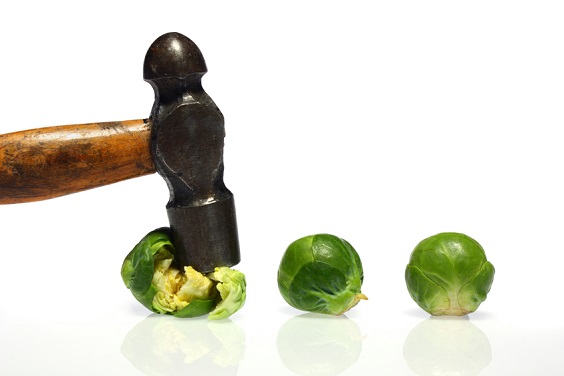
As mentioned in “part 1” of this blog, I’ve isolated some statements from various articles about taste to share with you as quick-and-easy-to-read food for thought facts. These points may generate some ‘ah-ha’ moments about why you might say yum while others say yuck to certain foods.
You can no doubt relate to some of these facts in the same way that I did. That’s why I included some personal comments after each “fact” that I found in my readings.
“If you really hate something, having it over and over again may not change it. But we know people develop tastes for some things – in social settings you have to eat things you may not like but eventually, you acquire a taste for them.”
I hated lima beans as a kid but eventually learned to love them even though I was not allowed to leave the table without eating some. A different kind of social situation – now I crave limas since they remind me of my late mother’s awesome home cooking.
“Why does one person love blue cheese and another cringe at the thought? How can someone eat Brussels sprouts by the bunch and someone else prefer only peas?”
While the jury is still out on this one in my opinion, I think it is a combination of nature and nurture. Being exposed to a food early and often can work for or against a food.
“As we get older, our bodies slow down. The same is true for our taste buds and sense of smell.”
As the years pass us by, the more likely it is that our taste preferences may change. Genetics may play a role in those changes, too. 
“Part of why you might like broccoli while your best friend finds it bitter is because you have different genes, which code for different bitter receptors.”
There you have it – genetics do play a role in how we perceive taste.
“Almost everyone has some degree of a sweet preference.”
Raise your hand if you don’t like sweets. I see very few hands. However, of course some people happen to like sweet foods more than others!
“While sugar has a sweet taste, strawberry is a flavor.”
Got that?!
“Research done at the Monell Chemical Senses Center showed that people who stick to a lower-sodium diet over time eventually prefer lower levels of saltiness in their food.”
So we can change our taste preferences according to the world’s leading experts on taste.
“There are acquired tastes, such as caviar.”
I am 100% certain this statement is true. While I’ve only had the opportunity to try caviar a few times, I still don’t like it. And I don’t like sardines or beer either after several attempts. All are acquired tastes in my book.
Love of Umami
“Umami is the taste of glutamate, an amino acid found throughout the human body and in protein-containing foods. Glutamate elicits a sensation, which is often described as brothy, full-bodied, meaty, and savory.”
I love umami. I have been an umami junkie for years. I use umami-rich ingredients – including monosodium glutamate (MSG) – as often as possible in my food preparation. (Here’s more about the umami taste.)
“Assuming five basic tastes and ten levels of intensity, 100,000 different flavors are possible. Taken together with the senses of touch, temperature and smell, there are an enormous number of different possible flavors.”
Yes, all foods are unique in that they can offer a “virtually limitless palette of flavors.”
So now you know why when you taste a certain food you say “yum” while a friend or family member might say “yuck”.
Now I’m hungry for some lima beans!

